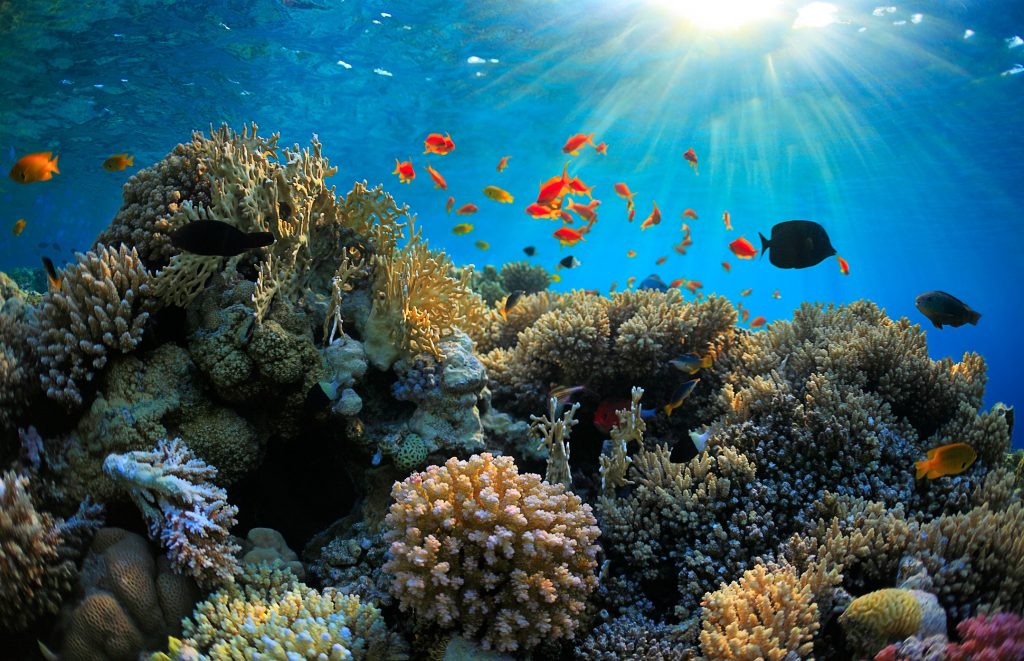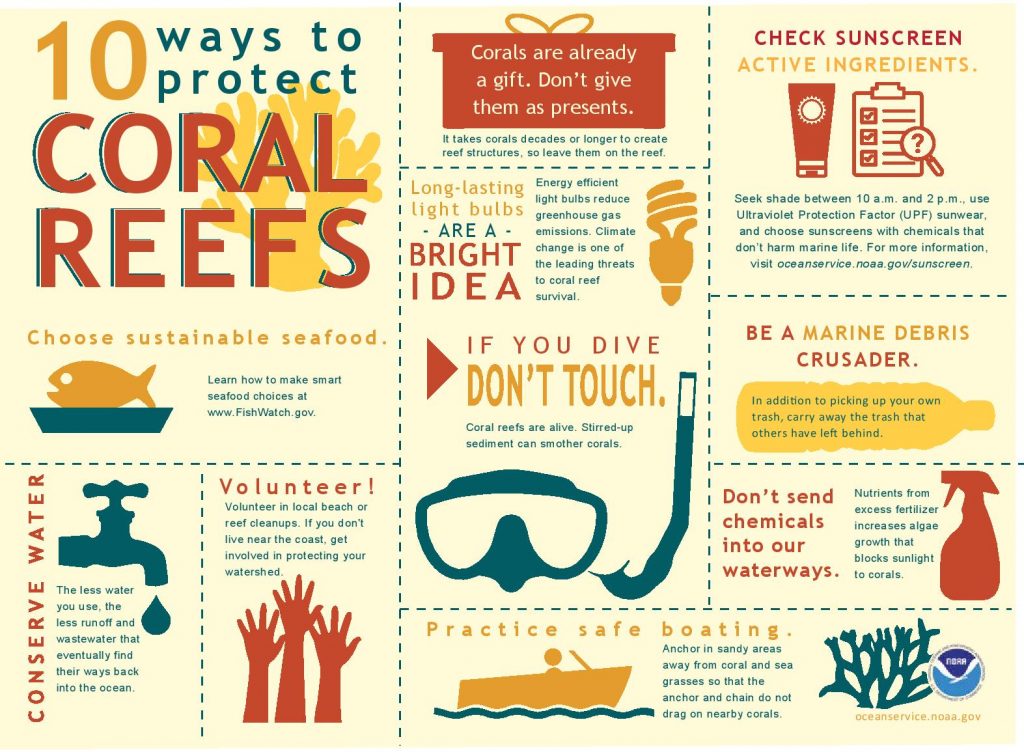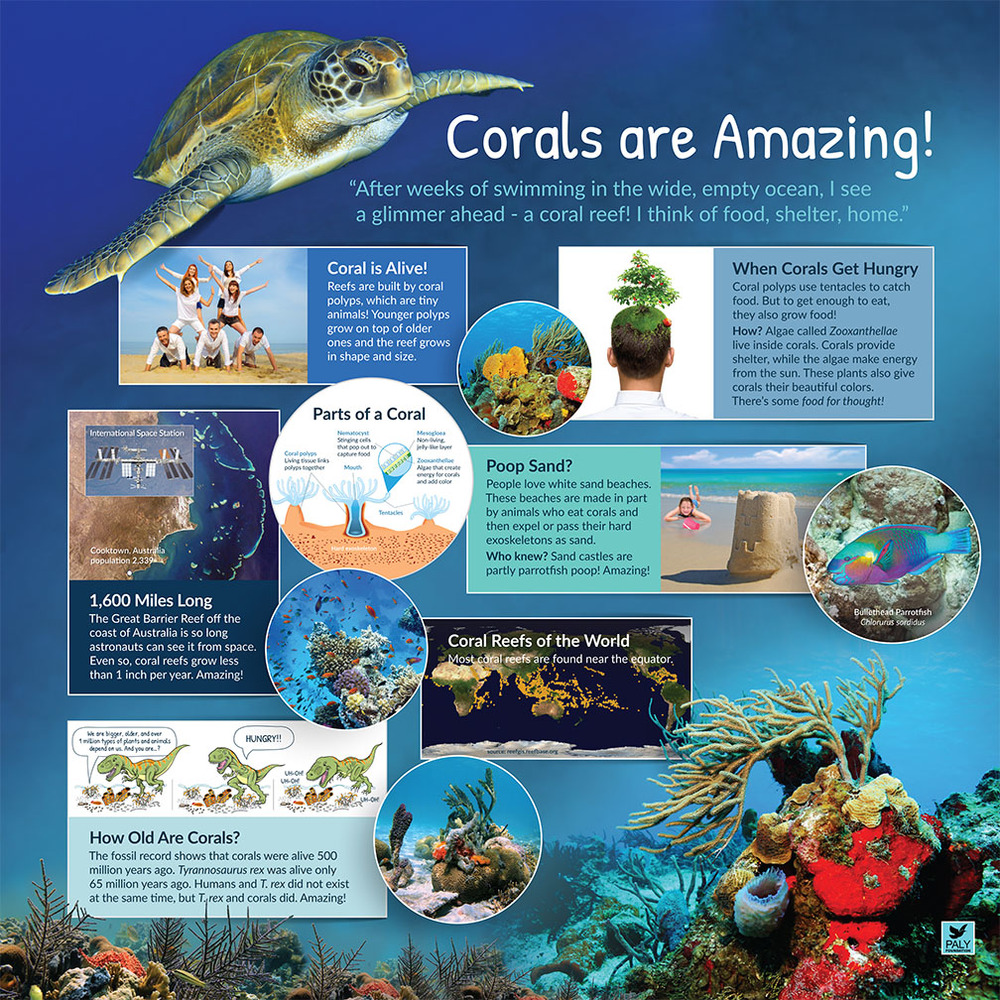This year, Coral Reef Awareness Week is being celebrated from July 25 – August 1. The South Florida coastline from Martin County through Monroe County is home to the only living coral barrier reef in the continental United States and is the world’s third largest coral reef system measuring at 105 miles. Though a majority of the current reef system is vibrantly healthy, we are aware of the stress Florida’s coral reefs are facing. Locally, the Florida counties of Monroe, Miami-Dade, Broward, Palm Beach, and Martin have banded together to create a “Coral Reef Ambassador” initiative, which provides actions individuals can take to safeguard our precious resource.

Image Credit: The Hobe Sound Nature Nature Center
Coral reefs are found in tropical and subtropical oceans of the world. Although they make up less than 1% of our oceans, nearly 25% of all marine animals use coral reefs during their life cycles. Corals are related to sea anemones and sea jellies. Tiny individuals or polyps make up colonies that attach to a base or substrate. Coralline algae produce calcium carbonate used to cement coral skeletons together. All corals have tentacles with stinging cells or nematocysts, providing them protection from predators. They feed on zooplankton filtered from the water.

Image Credit: Hobe Sound Nature Center
About fifty species of reef-building, stony or hard corals are found in Florida’s coastal waters. They include branching, encrusting and boulder corals. Octocorals, known as gorgonians or soft corals are also branching and encrusting. This family includes sea fans, sea whips, sea rods and sea plumes. Fire coral is the most common of the hydro corals. They have a similar body structure to the stony corals and brushing up against their strong stinging cells can be very painful. Black coral has a hard, inflexible skeleton with a beautiful glossy finish. Over harvesting of this species has occurred due to demand for jewelry and other curios made from it. It is very rarely seen.
Coral reefs provide habitat and food for over 7000 species of fish and invertebrates. Many of these inhabitants are important for tourism, commercial and recreational fisheries. Coral reefs remove and recycle carbon dioxide and serve as protection from wave energy and storms. Scientists estimate 10% of the world’s coral reefs have already been lost and some will be gone in fifty years. State and federal laws protect them from harm.

Image Credit: Hobe Sound Nature Center
To learn how to safely explore these habitats without damaging fragile organisms or adding to marine pollution, be sure to visit Martin County’s Protect Our Paradise website. Use reef-safe sunscreens! Conserve water and reduce chemical usage around homes and lawns that can run off into coastal waters. The biodiversity of our coral reefs is an important part of Florida’s legacy and must be protected. You can also virtually explore our coral reefs on your mobile device – learn more about the app here.
Reef Conservation Tips
Tens of thousands of divers descend on the Florida Reef each year, so coral-friendly diving practices are essential. It is vital that you avoid touching the corals with hands, fins, or gear. Here are some tips to avoid contact:
- Learn how much weight is ideal to get you to the bottom. Practice your buoyancy skills before diving on coral reefs.
- Swim at an attitude parallel to the reef to avoid kicking it with your fins. Shallow artificial reefs are good places to practice.
- You will enjoy a longer, safer dive if you hover a bit above the reef. The air in your SCUBA tank will actually last longer.
- Clip the alternate second stage regulator (octopus) to your Buoyancy Control Device (BCD) so that it does not drag across the reef. This goes for lobster hunting gear as well.
- When diving for lobsters, wear gloves to protect your hands, and if you must touch the reef, please do not touch corals.
- Spearfishermen—if you need to sit on the bottom to reload or float a fish to the surface, find a sandy spot to settle on.
- It is imperative that you clean your gear when moving to different areas along the reef. Microbial organisms can hitch a ride on unwashed dive gear, spreading disease from dive to dive. It is important to disinfect wetsuits, masks, fins and SCUBA equipment. While on board your vessel, clean gear with non-ionic detergents and soaps. Use a diluted bleach wash once you return to shore.
- Opt for biodegradable, reef-friendly sun protection. Sunscreens containing between 1-10 percent Oxybenzone may harm corals. If you can’t avoid Oxybenzone, opt for the lowest concentration. Any small effort to reduce Oxybenzone pollution could mean that a coral reef survives a long, hot summer, or that a degraded area recovers. Please do continue to wear sunscreen to prevent the risk of skin cancer, as the sun in South Florida is very strong.
Information for this blog post provided by the Hobe Sound Nature Center






